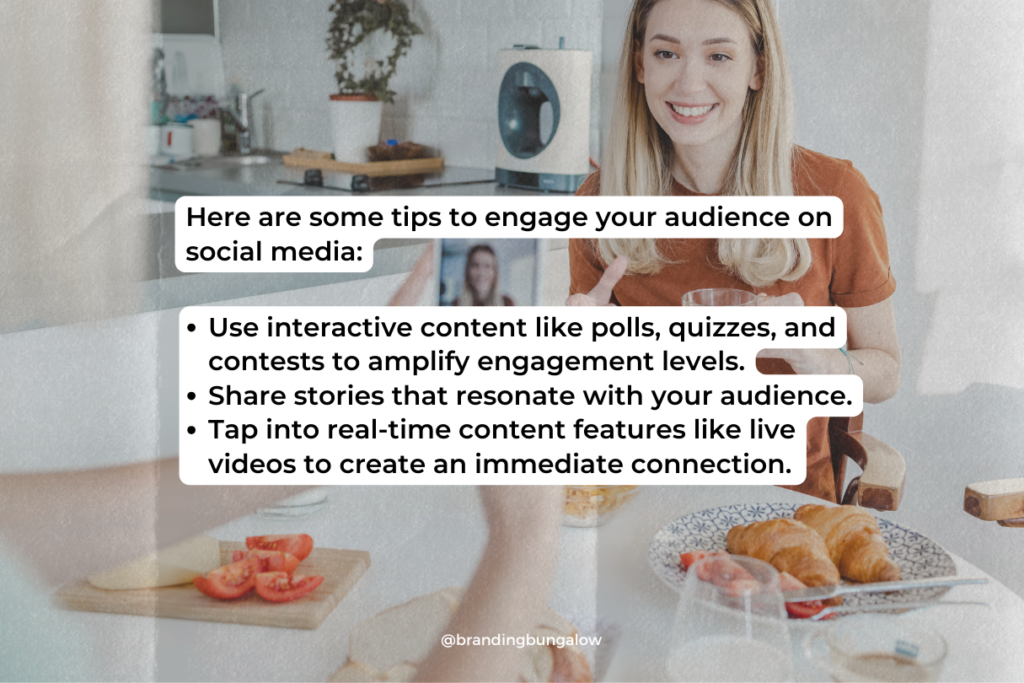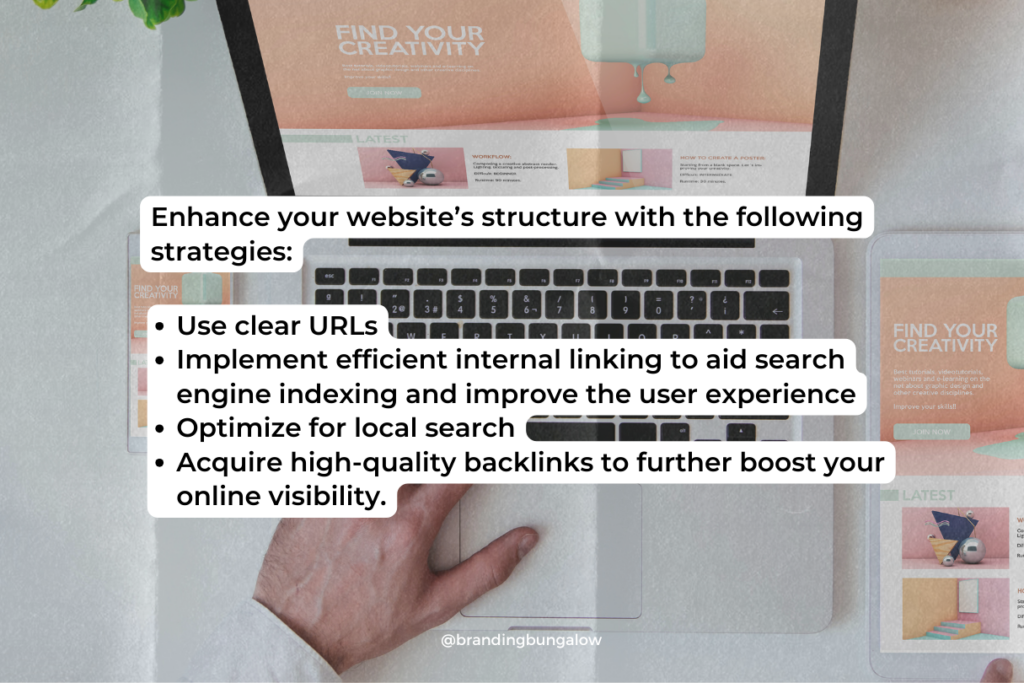Top Small Business Branding Techniques Revealed
Are you a small business owner wondering how to stand out in a crowded market? Effective small business branding isn’t just necessary; it’s a game-changer that can set your business apart and draw customers to your door. This article dives into practical branding strategies that can refine your brand’s appeal and grow your business without demanding a colossal budget or resources. Expect to uncover how to harness the power of branding for small businesses to craft a distinctive identity, engage your audience, and inspire loyalty—a blueprint for business owners ready to elevate their market presence.
Key Takeaways
- Building a strong brand identity for small businesses involves establishing core values, designing cohesive visual elements, and formulating clear brand vision and mission statements.
- Engaging a target market effectively requires conducting in-depth market research, personalizing brand messaging, and leveraging social media platforms to interact with and understand the audience.
- Strategic brand marketing is fundamental for growth and encompasses maintaining consistency across marketing campaigns, creating compelling materials, and employing effective social media tactics to enhance brand visibility.
Crafting a Distinct Brand Identity

Like an artist’s signature on a masterpiece, your strong brand identity is the defining touch that makes your small business branding uniquely yours. It’s the harmonious blend of colors, words, and values that sets you apart in the marketplace and allows you to connect personally with your customers.
So, what’s the process of weaving these elements into a cohesive and compelling brand identity? Let’s find out.
Unearth Your Brand’s Core Values
Venture deep into the ethos of your business to discover the principles that are your brand’s beating heart. These are the core values that shape your culture, inform your decisions, and craft the narrative that customers will relate to.
Reflect upon what your business stands for and gather insights from your team and customers to create a brand voice that is authentic and resonant. Remember, clarity and consistency in communicating these values will not only build a strong brand image but will also earn you trust and loyalty from your customers. Implementing these branding tips can make a significant difference in your business success.
Designing Your Brand’s Visual Elements
Your brand’s visual identity is more than just a logo. It’s a visual symphony composed of:
- Typography
- Color schemes
- Imagery
- Design
These elements are the visual cues that customers associate with your brand, fostering recognition and emotional engagement.
Selecting the appropriate typography and consistent imagery can captivate your audience’s attention and solidify your brand’s presence in their minds. Embrace professional tools like Adobe InDesign and Premiere Pro to craft polished marketing materials that align with your brand’s visual story.
Articulating Your Brand Vision and Mission
Crafting your brand’s vision and mission is akin to charting a map for your brand’s journey, defining its destination, and its purpose. A mission statement, for instance, articulates your brand’s current objectives, like Lumosity’s commitment to enhancing brain health through engaging games. This narrative should mirror your core values and brand personality, ensuring that your customers are captivated by your story.
Document these in your brand guidelines, a comprehensive compass that guides your marketing strategies and ensures that every customer interaction is a reflection of what your brand stands for.
Understanding and Engaging Your Target Market

Understanding your target market is akin to knowing the intricate dance steps in a ballroom. It allows you to glide smoothly into the hearts and minds of your customers, ensuring every move is in perfect harmony with their desires.
Here are some strategies to help you align better with your audience.
Conducting Market Research to Know Your Audience
The foundation of engaging your target audience is built on the bedrock of market research. By gathering detailed intelligence on your ideal customer’s demographics, preferences, and needs, you create a customer profile that guides your branding decisions. Engage with your audience through conversations and surveys, which can offer invaluable insights into their expectations and how they perceive your brand.
Online surveys, in particular, can provide a sneak peek into consumer opinions, allowing you to refine your brand messaging before presenting it to the world on social media platforms.
Tailoring Brand Messaging to Speak to Your Audience
To win the hearts of your customers, tailor your brand messaging to speak directly to them. Personalizing customer service by remembering individual preferences and previous interactions can create enduring bonds and brand loyalty. Small businesses that prioritize understanding their customers and offer personalized services not only foster stronger loyalty but also carve out a niche for themselves in the competitive world.
Surveys can also serve as a tool to engage current customers, refine your value proposition, and make informed adjustments to your pricing strategies.
Leveraging Social Media Platforms for Audience Interaction
Social media platforms are the modern-day agora where ideas are exchanged, and connections are forged. Choosing the right platforms where your target audience is most active is key to fostering meaningful interactions.
Here are some tips to engage your audience:
- Use interactive content like polls, quizzes, and contests to amplify engagement levels.
- Share stories that resonate with your audience.
- Tap into real-time content features like live videos to create an immediate connection.
Leverage platform-specific features such as Instagram’s ‘Swipe Up’ and Twitter’s hashtags to drive targeted engagement and build a community around your brand. Lastly, encourage customer participation through user-generated content campaigns to foster a sense of community and enhance brand loyalty.
Strategic Brand Marketing for Growth
Strategic brand marketing is the wind in the sails of your business, propelling it forward towards growth and success. From the consistency of your branding strategy to the effectiveness of your social media campaigns, strategic marketing is the key to expanding your market presence.
Here’s how to navigate this journey.
Building a Consistent Marketing Strategy
A consistent marketing strategy is more than a good plan; it’s a steadfast commitment to your brand’s growth. Utilize market research tools to align your brand development with customer preferences and to gauge consumer reactions to new concepts. Some analytical tools that can provide insights into customer behaviors include:
- Google Analytics
- Facebook Insights
- Twitter Analytics
- Instagram Insights
These tools are pivotal in forming ongoing and successful marketing strategies.
Maintain a unified approach across different platforms to ensure that your brand remains in the limelight and easily recognizable.
Creating Compelling Marketing Materials

Your marketing materials serve as the ambassadors of your brand, carrying your message across the digital and physical divide. These materials must mirror the essence of your brand’s identity and appeal to your target audience. Whether it’s through visually appealing imagery or persuasive videos, compelling marketing materials can significantly enhance conversion rates and bolster your brand’s reputation.
Moreover, encouraging customers to share their experiences can generate authentic content, while regular blog posts can establish your brand’s authority in the industry.
Implementing Effective Social Media Campaigns
Effective social media campaigns can be your brand’s ticket to widespread recognition and customer engagement. Create posts that captivate and hold your audience’s attention, establishing a loyal community around your brand.
Short, impactful videos are a perfect fit for social media platforms and can significantly enhance your brand’s visibility. Planning your content in advance is essential for fostering strong relationships with your audience and ensuring a consistent stream of engaging posts.
Establishing a Robust Online Presence

In today’s connected world, a robust online presence is as essential as the air we breathe for small businesses. It’s the digital face of your brand, accessible to customers across the globe at any time.
Building an online presence that mirrors your brand’s identity and values is a worthy endeavor.
Developing a Professional Website
A professional website is your brand’s home on the internet—a place where customers can learn, engage, and connect with your business. A user-friendly layout with a logical structure is crucial for providing an exemplary user experience, which in turn strengthens your brand’s online reputation. Additionally, a well-structured website is a boon for your SEO efforts, helping you climb the rankings and increase your visibility.
Implementing a multi-channel customer service system can significantly enhance customer satisfaction, leading to more interactions and a stronger online presence.
Optimizing for Search Engines
Search engine optimization (SEO) is your website’s compass, guiding potential customers to your virtual doorstep. By incorporating targeted keywords into your content, your website can rise to prominence in search engine rankings, attracting more clicks and potentially increasing revenue.
Enhance your website’s structure with the following strategies:
- Use clear URLs
- Implement efficient internal linking to aid search engine indexing and improve the user experience
- Optimize for local search
- Acquire high-quality backlinks to further boost your online visibility.
Engaging with Customers Through Content Marketing
Content marketing is your brand’s voice in the digital realm, offering valuable information and connection points with your customers. By producing high-quality, informative content, you can establish your small business as a credible authority in your niche and attract long-term organic traffic to your website.
Consistency in content marketing is vital for building a library of content that not only attracts organic traffic but also services your customers’ needs, even on a smaller scale. Use social media analytics tools to track the performance of your posts and refine your strategy for improved engagement.
The Power of Brand Consistency

Brand consistency is the magic ingredient that cements your brand in the hearts and minds of customers. It’s the assurance that no matter where they encounter your brand—be it on your website, social media, or print materials—they’ll always be greeted with the familiar and reassuring presence of your brand’s voice and values.
Crafting Comprehensive Brand Guidelines
Comprehensive brand guidelines, also known as a brand style guide, serve as the blueprint for your brand’s identity. They ensure that your brand’s message is delivered uniformly across all platforms, safeguarding your image and enhancing customer recognition. From the specificity of your logo usage to the nuances of your brand’s communication voice, these guidelines are the guardrails that keep your marketing efforts on track.
Embracing digital asset management software can further ensure that your media assets are consistent and aligned with your brand image.
Training Employees to Be Brand Ambassadors
Your employees are the front-line ambassadors of your brand, and their alignment with your core values and messaging is crucial for effective communication. It’s essential to cultivate a corporate culture that embraces the brand’s ethos and empowers employees to act as brand custodians.
Regularly incorporating feedback from both customers and employees can help maintain brand consistency and improve the overall customer experience.
Monitoring Brand Representation Across Channels
Monitoring your brand’s representation across channels is like keeping a watchful eye on the horizon. Conducting regular brand tracking studies can measure brand awareness and perception, shaping how effectively your brand interacts with its audience.
Utilize website analytics to understand visitor behavior and refine your SEO strategies, ensuring your brand’s digital presence is as robust as it can be. Repurposing successful content from previous campaigns can reinforce brand consistency and resonate with both existing and new customers.
Differentiating Your Small Business Brand
In a sea of competition, differentiation is the buoy that keeps your small business afloat and visible. By identifying what makes your brand unique and leveraging these distinctions, you can carve out a niche for your brand that not only stands out but also connects deeply with your customers.
Identifying Unique Selling Propositions (USPs)
Identifying your unique selling propositions (USPs) is about shining a spotlight on what sets your products or services apart from the rest. Whether it’s an innovative product feature, exceptional service, or a compelling brand story, your USPs are the pillars upon which your brand stands. These unique qualities should be encapsulated in every facet of your branding, from your name and visual components to your messaging, to communicate effectively with your audience.
Storytelling: Sharing Your Brand Story

Storytelling is a powerful conduit for sharing your brand’s ethos, triumphs, and trials with the world. Starting your content marketing with a storytelling approach allows your small business to establish itself as a thought leader, setting you apart from competitors.
Integrate customer testimonials and highlight significant business milestones to showcase your brand’s journey and achievements. Doing so creates an emotional connection with your audience. Sharing not only successes but also the challenges your brand has faced adds authenticity and depth to your story. Thus, you humanize your small business branding and fostering a deeper connection with customers.
Innovating Within Your Niche
Innovation is the lifeblood of differentiation, allowing your small business branding to adapt and thrive in a constantly evolving market. Here are some strategies to help you diversify your product or service offerings:
- Respond to customer needs and market shifts by introducing new products or services.
- Engage in community events and corporate social responsibility (CSR) programs to network and expose your brand to new audiences.
- Showcase your niche products and services through targeted marketing and advertising campaigns.
By implementing these strategies, you can showcase your commitment to your niche and attract new customers.
Embrace entrepreneurial growth through mentorship, industry partnerships, and community engagement, keeping your brand dynamic and at the forefront of innovation.
Fostering Customer Loyalty and Advocacy
The culmination of a successful brand strategy for small business branding is the fostering of unwavering customer loyalty and advocacy. When customers feel valued and understood, they not only return, but also become vocal advocates for your brand, amplifying its reach and impact.
Delivering Exceptional Customer Service
Exceptional customer service is the cornerstone of customer loyalty. Providing high-quality products and services consistently across all customer touchpoints ensures satisfaction and strengthens customer relationships. Transparency and honesty about your brand’s values and objectives foster a trust-based relationship with customers, which is pivotal for customer service and loyalty.
By focusing on exceptional customer service, your brand can differentiate itself in a crowded market and build a strong, loyal customer base.
Creating Reward Programs and Incentives
Reward programs and incentives are strategic tools for nurturing customer loyalty and encouraging repeat business. Implementing a customer loyalty program that appreciates repeat purchases can turn occasional customers into brand loyalists. Diversify your rewards to offer more than just discounts. Think exclusive access to events, contributions to social causes, or partnerships with other businesses.
Consider tiered programs that recognize and reward your most dedicated customers. These programs further personalize the customer experience and foster a community around your brand. Craft loyalty programs that not only benefit the customer but also enhance the business’s value proposition, creating a win-win scenario.
Encouraging Customer Feedback and Reviews
Customer feedback is the compass that guides the continual improvement and innovation of your brand. Actively soliciting feedback and implementing customer suggestions shows that you value their input and are committed to evolving with their needs.
Encouraging reviews and testimonials provides social proof for your brand, demonstrating its value and effectiveness to potential customers. Embrace this feedback loop as it not only solidifies existing customer relationships but also serves as a beacon for new customers seeking a brand they can trust.
Summary
From the canvas of core values to the masterpiece of a fully realized brand identity, we’ve journeyed through the vibrant landscape of small businesses branding. Embrace these strategies to establish a brand that resonates with your target audience, stands out in the market, and fosters customer loyalty. Let your brand be the story that captivates, the experience that delights, and the promise that is always kept.
Frequently Asked Questions
How important is it for a small business to have a distinct brand identity?
Having a distinct brand identity is crucial for small business branding as it connects with customers on a personal level, differentiates them from the competition, and fosters credibility and trust essential for growth. Brand identity is a key factor in the success of a small business.
Can social media really make a difference in how my brand engages with customers?
Yes, social media can significantly impact how your small business branding engages with customers by providing a platform for interactive content and community building. It’s a vital tool for effective interaction with your target audience.
What are some ways I can differentiate my brand in a crowded marketplace?
To differentiate your brand in a crowded marketplace, identify unique selling propositions, leverage storytelling, and engage in community and innovation within your niche. This can help your brand stand out and attract customers.
Why is brand consistency so important?
Brand consistency is crucial because it leads to increased recognition and a strong brand voice across all marketing channels, ultimately resulting in a significant revenue increase.
How can I foster customer loyalty and advocacy for my small business?
You can foster customer loyalty and advocacy for your small business branding by delivering exceptional customer service, creating reward programs and incentives, and actively seeking customer feedback and reviews. This will help build lasting relationships with your customers and encourage them to become advocates for your business.
Recent Blog Entries
Discounts to Dubsado CRM, Helcim Payment Processing and...
Brand audits can save your business' sinking marketing ship.
What's happening to Coke and what you can learn from it.
Shop Products
Create a personalize brand board by taking elements from our 3 signature brand board templates.